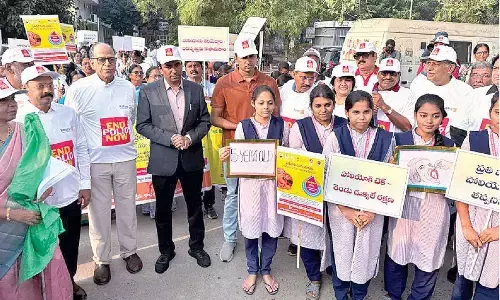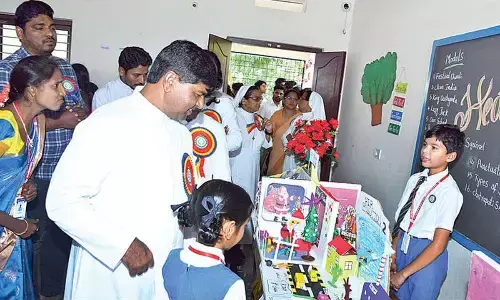NASA anti-gravity suit prevents blood loss for women during childbirth

Inspired by NASA research on inflated anti-gravity suit, \'miracle suits\' are helping save new mothers around the world by preventing blood loss during or after childbirth, according to the US space agency.
Inspired by NASA research on inflated anti-gravity suit, 'miracle suits' are helping save new mothers around the world by preventing blood loss during or after childbirth, according to the US space agency.
Every year at least 70,000 women die from obstetric hemorrhage - mostly in the world's least developed countries, where effective medications, blood transfusions and surgery can be hours or even days away - time a hemorrhaging woman just does not have.
Previously, researchers at the NASA Ames Research Centre proposed applying pressure to a woman's entire lower body using an inflated anti-gravity suit, or G-suit, which prevents blood from pooling in the legs by using air-filled bladders.
NASA has long relied on them to keep test pilots from blacking out during extreme acceleration and astronauts use them during re-entry to squeeze the arms and legs and push blood back towards the head as they readjust to the pull of Earth's gravity.
Latest research at Ames has led to a better understanding of the physiology of G-suits and the realisation that even lower pressures could be used effectively to decrease bleeding and shift blood back to the heart and brain.
California-based Zoex Corporation developed the first commercially available pressure garment suitable for treating shock and blood loss in the early 1990s. Since the pressure did not need to be as strong as in military and aviation cases, the company scrapped the old-style G-suits for a non-pneumatic version using simple elastic compression.
In a 2004 study by Ames and other researchers, the garments saved 13 out of 14 patients in Pakistan who were in shock from extreme blood loss, NASA said in a statement. In another study in Egypt and Nigeria, published in 2007, the garment reduced both blood loss and mortality from postpartum hemorrhage by 50 per cent.
Suellen Miller, the founder of the Safe Motherhood Programme, said the results were remarkable. "In the field of maternal health, we generally don't see that kind of a reduction, and even more so when it's the result of a single, simple intervention," she said. By 2012, the World Health Organisation (WHO) and the International Federation of Gynecologists and Obstetricians both decided to officially recommend the device to treat postpartum hemorrhage, NASA said.
Since then, 20 countries have purchased a lower-cost version of the pressure garment called LifeWrap, produced by a manufacturer founded by Safe Motherhood and nonprofit PATH. "We've determined that these suits can be used at least 70 times. So we are looking at a life-saving device that costs less than a dollar per use," said Miller.
In the wake of Typhoon Haiyan, which ravaged the Philippines in November 2013, the Safe Motherhood Programme donated garments to midwives working in disaster zones. More recently, Miller and colleagues conducted training for Doctors Without Borders and the Canadian Red Cross so they could use the garment in Ebola-stricken countries in Africa.












